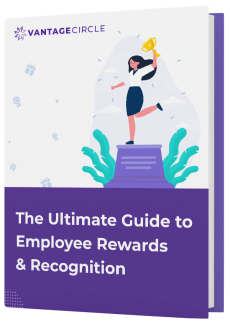5 Ways HR Automation Can Improve Business Efficiency

HR specialists have a lot on their plates, as they have to juggle candidates’ screening, interviews, onboarding, employee lifecycle in the company, and more. We can think of the HR department as being the core of the company - here is where the primary resources (employees) are being selected, processed, and maintained.
Now try to imagine what would happen if the company’s core doesn’t perform at optimum parameters. The workflow would slow down, people will be unhappy with their jobs, and all these elements will reflect in low productivity, reduced sales, and a drop in profitability.
Luckily, in today’s day and age, we can use HR automation to allow specialists to focus on the most critical tasks and drop repetitive, menial ones that only take time and stretch the nerves.
What is HR Automation?
Everyone has to deal with tedious tasks at work. Whether it’s filling in a report at the end of the workday or browsing through a stack of CVs to identify the best candidates, these tasks are time-consuming and can be entrusted to an AI-based system.
This way, we automate the areas that don’t require too much mind power but can benefit from the attention to detail; only an intelligent algorithm can have.
According to a 2017 KPMG survey:
56% of respondents expect to see an improved performance due to HR automation, and 54% consider that intelligent algorithms will free staff for more strategic work.
As such, there is no wonder why more businesses invest in AI training and various intelligent algorithms. To make it even more clear, we’ll take a closer look at the top 5 reasons why HR automation is great for business efficiency.
1. Improves the Talent Acquisition Process
Talent acquisition plays a massive role in any company’s success, so it may seem a bit risky to allow an automated process to cover it.
However, intelligent algorithms are more than capable of taking care of the first steps (filtering viable candidates, selecting profiles based on specific characteristics and skills, and maintaining basic communication during the first phase).
An AI-based selection system reduces bias and human errors, as it only considers the candidates’ skills and level of experience.
2. Better Focus on Employees’ Needs
AI integration with HR is reshaping the work culture and allows specialists to focus their attention where it is needed.
For instance, HR people can now take better care of employees’ needs by analyzing their behaviors and identifying any possible issues and frictions in time.
Furthermore, AI-based systems can also be used to predict collaboration patterns (people that work better together) and deliver training sessions and materials in a manner that’s most likely to be accepted by each person.
That reduces the time spent with administrative tasks while also lowering the risk of error due to fatigue or boredom.
3. Less Paper & Document Storage
Automation is also about easy access to documentation based on access rights. In the modern office system, all files are available electronically, based on a hierarchical structure. This way, everyone has access to documents according to their clearance levels.
As a result, employees can work from any location and time, which encourages more flexibility in the work field.
Furthermore, this organizational system reduces accidental or intentional information leaks and increases its protection against external threat factors. It also reduces costs with office supplies and document storage (since everything is archived and backed up in the cloud).
4. Intelligent Business Decisions
One of the main reasons so many businesses consider using AI & ML algorithms in their HR departments is the capacity to learn and analyze.
These systems never stop collecting data and improving based on the new information they gather (in short, they learn how to become better at their tasks).
As such, managers can run the data through a predictive analytics system to identify various patterns that may influence the company’s future.
In addition to traditional ways to increase motivation in the workplace, you can use HR automation to predict which employees are more likely to strive in their positions and fit better in a different role.
The system may even be used to identify ways to increase employee productivity and devise methods to keep everyone motivated and goal-oriented.
5. Fewer Data Entry Errors
The human factor does not mix well with data entry because our brain is not wired for repetitive and menial tasks. As such, it makes sense that tired professionals, with a lot on their plate, can (and will) make a series of errors when tending to the company’s database of employees.
In today’s highly centralized data systems, even the smallest error can cause problems, and it takes time and resources to identify it. So why not eliminate the risk?
AI & ML algorithms have the capacity to cover data entry even for complex databases. Furthermore, they do so quickly and without errors, covering a massive volume of work in a short amount of time. As such, HR automation is also about making sure the data used to calculate benefits, awards, and holidays is not corrupt.
Wrapping It Up
While we can’t entrust AI-based systems with complex tasks (yet), these algorithms can successfully cover repetitive and boring tasks that everyone dreads. That leads to happier, more focused employees and can even lead to cost cuts in the long-term.
Overall, HR automation integration is a big win for companies of all shapes and sizes.

Vantage Circle is a simple AI-powered Rewards & Recognition Platform for upgrading your employee experience and engagement for better productivity.




